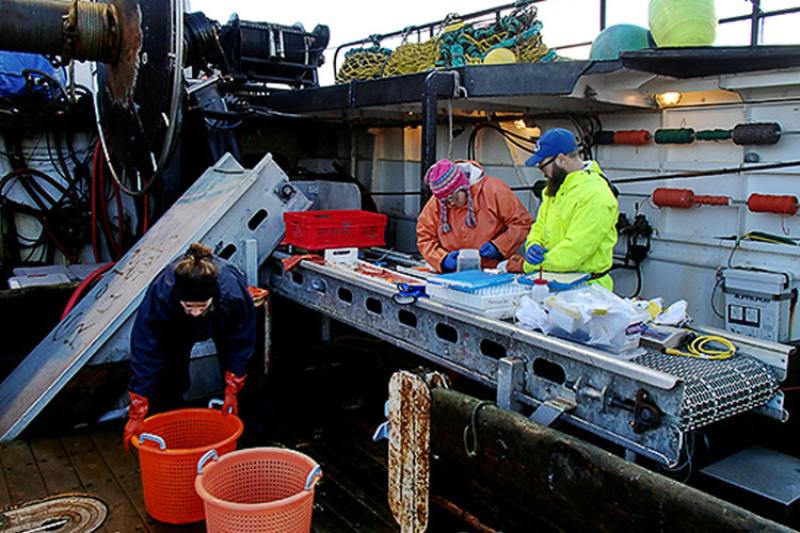Data collected during a special winter survey may yield some important information about female sablefish that will help in its management. The fish caught during this survey also provided a welcome meal through the Kodiak, Alaska food bank.
Sablefish, also called “black cod,” command some of the highest prices per pound paid to commercial fishers in Alaska, and the fishery is valued at around 95 million dollars per year. Sablefish is prized for its rich and healthy omega-3 oil content and flaky, mild-flavored white flesh. Most of the total world catch of sablefish comes from Alaska.
Sablefish populations are healthy and well managed in Alaska waters. In part, this management success is due to a very solid scientific underpinning. To get that science, NOAA Fisheries scientists at the Alaska Fisheries Science Center worked closely with the fishing industry to conduct a winter survey for sablefish and rockfish (rougheye and shortraker) which will help scientists glean better estimates of how many female sablefish there are in the population that will spawn in the coming year.
Why Knowing How Many Females Are in the Ocean Matters
Although NOAA Fisheries has been conducting maturity observations on sablefish in Alaska since 1979, the research was always conducted during the summer months when maturity can be difficult to assess. By conducting the research in winter, when scientists can clearly identify female rockfish and sablefish that will spawn, scientists will be able to provide a more accurate estimate of the proportion of the population that is spawning.
“Mid-December is a great time to sample sablefish for maturity since fish are preparing to spawn but have not yet spawned,” said Cara Rodgveller, a NOAA Fisheries biologist involved in the study. “This makes determining maturity very straight forward because mature females should have developed eggs.”
NOAA Fisheries collected data on length, age, weight and anatomical features from each fish. Scientists intend to compare estimates of maturity from samples collected during the annual summer longline survey and winter. They are looking for other indications of maturity, such as energy storage in the liver, which can be a good predictor of whether a female sablefish will spawn in the coming winter. They are also looking for evidence that fish that have spawned before can skip a year of spawning. This information will help scientists further understanding of how many mature sablefish there are (spawning stock biomass) in Alaska waters.
“We were able to tag 40 fish to track movement related to winter spawning,” said Rodgveller. “Knowing this helps us better understand what areas are important for spawning.”
Once all the data are analyzed, NOAA Fisheries scientists will use the information to determine the size of the spawning stock in Alaska, which will ultimately help set sustainable catch levels for Alaska waters.
Fishing Crew Finds Good Use for Survey Catch
“We really want to say a big thank you to the crew of the F/V Gold Rush and to Trident Seafoods,” said Katy Echave, chief scientist for the NOAA Fisheries research cruise. “Not only did the crew lend their expertise of the fishing grounds and in navigating waters during an unfriendly time of year but the vessel owners also coordinated the logistics of getting the fish processed by Trident, and then distributing the fish to the Food Bank of Kodiak. This was just another great example of why I love living in this great state: the generosity and support found within each community.”
The Trident Seafoods Corporation in Kodiak donated their company time and facilities to process approximately 4,000 lbs. (round) of sablefish and rockfish that was then donated to the Food Bank of Kodiak.



